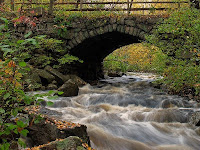 Moving water has become one of my favorite objects. These scenes are difficult to photograph but make for beautiful subjects. Sudbury River was one of my first of this kind. I first discovered the scene on a trip to one of my daugther's soccer games. The Fall foliage peak was almost over. When we came around the corner in our car I caught a glimpse of the bridge with the Sudbury river and committed the image to memory. Needless to say we won the game. Although the next day was overcast I decided to go back and work the object. Climbing down to the river was quite a hassle and adventure because of the slippery rocks and boulders but worth while. Turns out that overcast or twilight conditions are the most important ingredients when photographing moving water.
Moving water has become one of my favorite objects. These scenes are difficult to photograph but make for beautiful subjects. Sudbury River was one of my first of this kind. I first discovered the scene on a trip to one of my daugther's soccer games. The Fall foliage peak was almost over. When we came around the corner in our car I caught a glimpse of the bridge with the Sudbury river and committed the image to memory. Needless to say we won the game. Although the next day was overcast I decided to go back and work the object. Climbing down to the river was quite a hassle and adventure because of the slippery rocks and boulders but worth while. Turns out that overcast or twilight conditions are the most important ingredients when photographing moving water. 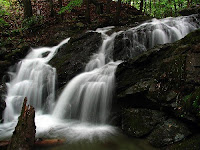 Shutter speed determines the silky effects. Short exposures freeze the water and often translates into less favorable images.
Shutter speed determines the silky effects. Short exposures freeze the water and often translates into less favorable images. 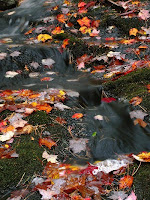 On the other hand, streaming waters provide wonderful silky shapes and patterns when longer exposure times are chosen.
On the other hand, streaming waters provide wonderful silky shapes and patterns when longer exposure times are chosen.A tripod for optimal image quality and minimum blurriness of the surrounding landscape during the longer exposure times is a must. The use of a polarizer filter eliminates reflections from wet surfaces and increases color saturation. The polarizer also reduces image brightness and provides longer exposure times, if needed.
Shutter speeds at around 1/2 through 1/15 of a second produce velvety and silky effects for streams, rivers and cascading water. Waves and surfs require shutter speeds around 1 second or more.
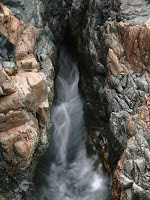
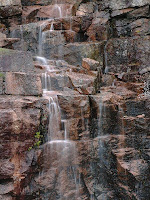
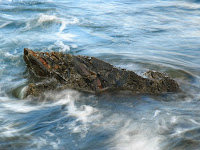

Great, informative articale as usual...Excellent photographs,
ReplyDeleteThank you Veronica!
ReplyDeleteWhat about using a ND filter instead of a polarizer to extend shutter speed...
ReplyDeleteND filter works perfectly fine too. I start out with the polarizer to bump up colors and saturation. The polarizing filter also eliminates unwanted glare when used correctly ... sometimes both are a good combination. Thanks for commenting ... like to read more >>> http://www.apogeephoto.com/feb2012/jroth22012.shtml
ReplyDelete